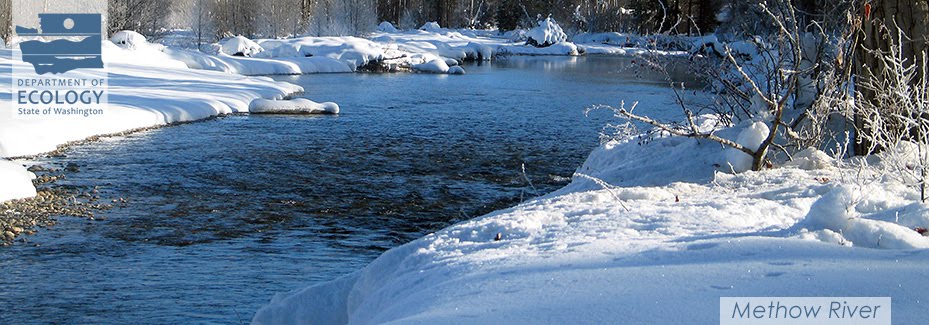By Jessica Payne, Environmental Assessment Program communications manager
 |
| Crews fly through a rainbow as they pass over Magnolia Park in Seattle. Click the image to view this month's issue. |
Last month's Eyes Over Puget Sound flight brought us many dynamic views, wildlife sightings and readings of abnormally warm water temperatures.
Our monitoring team is seeing the warmest water temperatures and lowest oxygen levels in 25 years of sampling Puget Sound. These warm waters are amplified by drought conditions as warm weather has left little snow to feed our rivers.
The story's painted in the pictures
Sediment tinted the water as warm weather melted what little snowpack we've had. That snow ran down the mountains and poured it into Puget Sound through our rivers, creating scenic depictions of dark blue branching into the muddy brown water.An algae bloom near Bremerton painted the waters of Sinclair Inlet and some of the confined bays in contrasting swirls of deep fuchsia and blue.
In contrast, the surface water appeared very clear in some parts of Puget Sound due to rivers nearby those areas beginning to run low.
Meet some of our tidal creatures
The coastline of Puget Sound has many rocky tide pools and craggy landscapes. Though these areas might be difficult for us humans to navigate, intertidal organisms feel right at home.
When the tide is up, these creatures feed, hunt, and interact with others in the community. When the tide is down, we can get a glimpse of these interesting critters such as hermit crabs, sea stars, anemones and much more!
Come check them out in this month's Personal Field Impressions section.
Want to see more Puget Sound creatures? See up close microscope photos of the animals that live on the bottom of the sound in our Eyes Under Puget Sound Flickr albums.
Want to see more Puget Sound creatures? See up close microscope photos of the animals that live on the bottom of the sound in our Eyes Under Puget Sound Flickr albums.
What's Eyes Over Puget Sound?
Eyes Over Puget Sound combines high-resolution photo observations with satellite images, ferry data from travel between Seattle and Victoria BC, and measurements from our moored instruments. We use a seaplane to travel between our monitoring stations because they are so far apart.On each flight we take photos of Puget Sound water conditions and turn those out, along with data from our stations, in the monthly Eyes Over Puget Sound report.
Learn more and see other issues on our website.



No comments:
Post a Comment